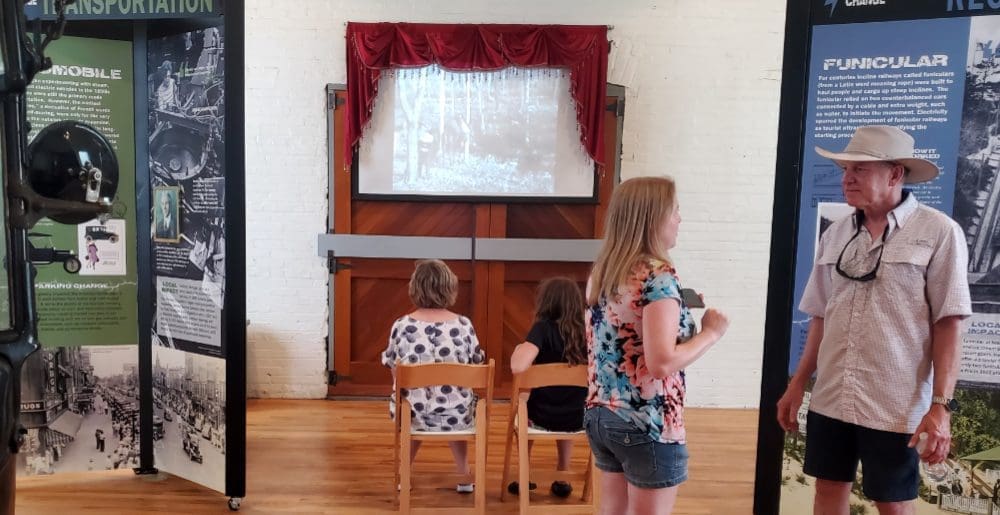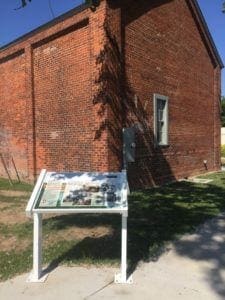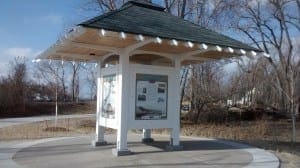The Pump House Museum and Learning Center is filled with fascinating exhibits, artifacts, and historical images.
The North Gallery is reserved for changing, temporary major exhibitions and the South Gallery contains three permanent exhibits. Descriptions of these exhibits are outlined below as well as two outdoor exhibits located nearby. These exhibits have been prepared by Valerie van Heest and William Lafferty of Holland-based Lafferty van Heest and Associates in collaboration with the board of the Historic Ottawa Beach Society and its resident historian Dan Aument.
Explore our current exhibits!
SPARKING CHANGE: Electrical Innovations
The North Gallery temporary exhibit explores innovations in communication, transportation, recreation, and mechanization, which sparked a transformation in many aspects of the American way of life.
Visitors will be challenged to send and receive telegraph messages in Morse code and can also learn about the funicular inclined railway on the Macatawa side of the Holland channel. They can even marvel at the earliest motion pictures from the 1890s and early 1900s.
The biggest artifact in the Sparking Change exhibit is an unrestored 1921 Ford Model T. At an interactive display, visitors can learn about the complicated process of starting a Model T, and then try on the interactive. Those who successfully follow the steps will hear the sound of a Model T starting up.
This exhibit explores how these innovations affected the world in general and Holland, Michigan, in particular.
HOTEL OTTAWA: Illuminating History
The South Gallery exhibit tells the story of when the hotel opened in 1886 and how the growing middle class had both time and money to travel.
At the same time, America was entering the Second Industrial Revolution, aka the Electric Revolution. This would progressively elevate the hotel experience and change the American way of life. The Museum building, originally an isolated electric power plant, and the big Deming water pump are the two most significant artifacts which remain from the hotel.
Digital displays in the South Gallery have information about the Big Red lighthouse, Lakewood Farm and Jenison Electric Amusement Park, and the Kids Corner with hundreds of examples of student art and writing projects about the history of our area. Visitors can look at themselves in the Fun House mirrors, or ride the roller coaster car which displays a video of a 1920’s figure 8 roller coaster.
Also located in the South Gallery is the newest interactive display in the Pump House Museum and Learning Center, which describes the isolated electric generating plant which was installed in the Museum building in 1901.
The video ‘How to light up the Hotel Ottawa’ highlights the various parts of this interpretive exhibit.
The central part of the exhibit is a very intricate and detailed working model of an early steam powered electric generating plant. When visitors to the Museum spin the handle on the exhibit, they’ll see the antique generator in action – and the lights on the big postcard of the Hotel Ottawa will light up
THE PUMP HOUSE
Outdoor Panel
Originally an electric lighting plant, this building was constructed in 1901 to generate power to illuminate the newly expanded Ottawa Beach Hotel. This outdoor exhibit addresses changing technologies and the changing use of the building, which after the Ottawa Beach Hotel burned in 1923, became known as the “Pump House.”
This exhibit made possible through Ottawa County Parks and Recreation Department.
HOTEL OTTAWA
Outdoor Interpretive Kiosk
Located about 1000 feet west of the Pump House Museum along Black Lake Boardwalk, this kiosk stands at the location of the southeast corner of the former Ottawa Beach Hotel. Visitors will learn about the four distinct phases of development of a hotel considered one of the finest resorts in the Midwest. Parking in available along Ottawa Beach Road near the museum or at Fisherman’s Cove parking lot off Ottawa Beach Road just before the entrance to the Holland State Park.
This exhibit made possible through Ottawa County Parks and Recreation Department.
If you’d like to see what we’ve displayed in the museum in the past, click here to explore our previous exhibits!




